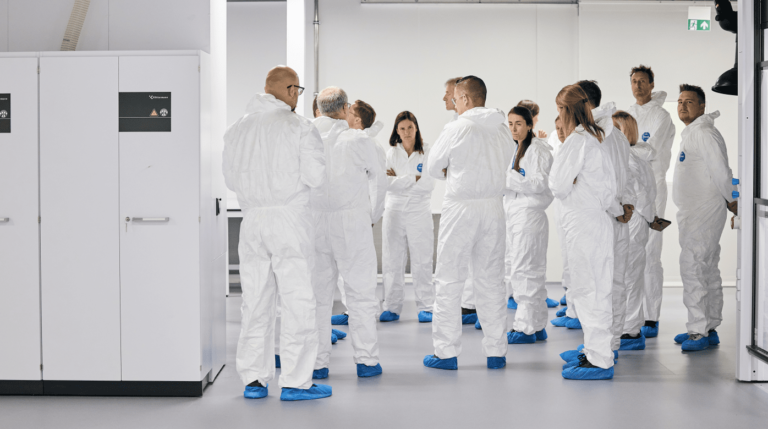Materials technology and recycling company Umicore says it has inaugurated what it claims is one of the world’s largest and most advanced solid-state battery material prototyping facilities in Olen, Belgium.
The 600m² facility is intended to support the full chain of solid-state battery development – from the formulation of the materials, their characterization and production, to battery cell assembly and subsequent testing on battery level. With this complete approach it is possible to develop new material categories, including catholytes, which combine cathode active materials and solid electrolytes.
“Umicore’s unique prototyping center will further scale up and advance our innovation and technology leadership in solid-state battery chemistries, which we’ve been developing since 2017 with multiple key patents,” said Mathias Miedreich, CEO of Umicore. “We are committed to our frontrunner position in the cathode materials industry, and this new facility is a critical step in strengthening our leadership even further, increasing our capacity for prototyping and with that our ability to support our customers by a factor of more than 10.”
Developing solid-state batteries involves materials that are extremely sensitive to moisture and therefore require specialized infrastructures, including exceptionally dry air. Humidity levels inside the laboratory are therefore maintained at less than 0.1% – each hour 200,000m3 of dry air is blown through the facilities. This dry air is essential for the accurate testing, analysis and development of this next generation of cathode active materials.
The company says that this ultra-dry air preserves the stability of battery materials and extends their lifespan, thereby reducing frequent material replacements. Instead of having to work within the confines of isolated glove boxes, researchers can manipulate products more freely in a larger, open area. These dry rooms are also more energy efficient as precise testing and analysis minimize trial-and-error iterations.
Umicore’s battery materials technology portfolio consists of its present mid-to-high nickel NMC (nickel, manganese, cobalt) technologies, near-term manganese-rich HLM (high lithium, manganese) technologies and future Na-ion (sodium-ion) cathodes and solid-state battery technologies.


